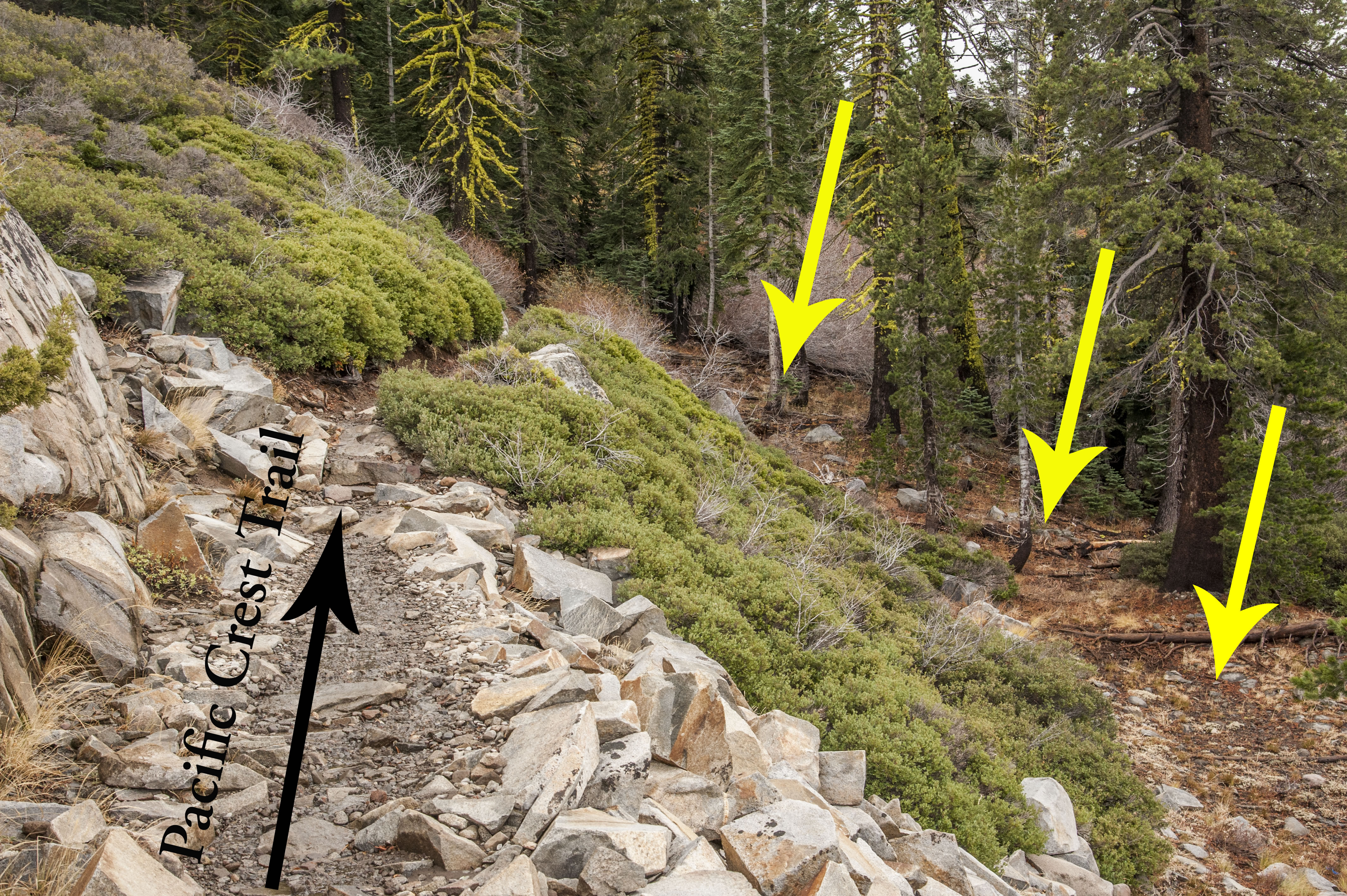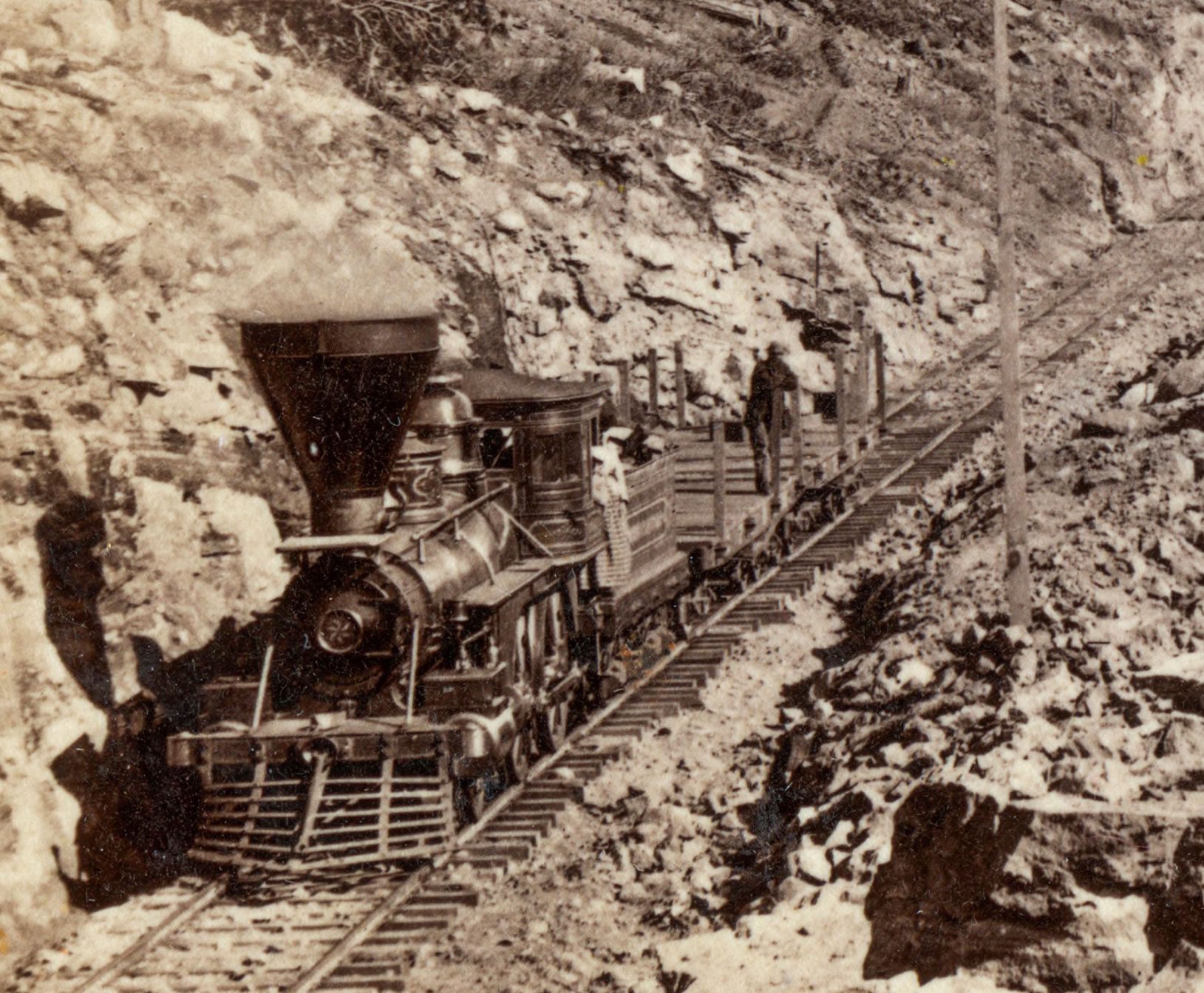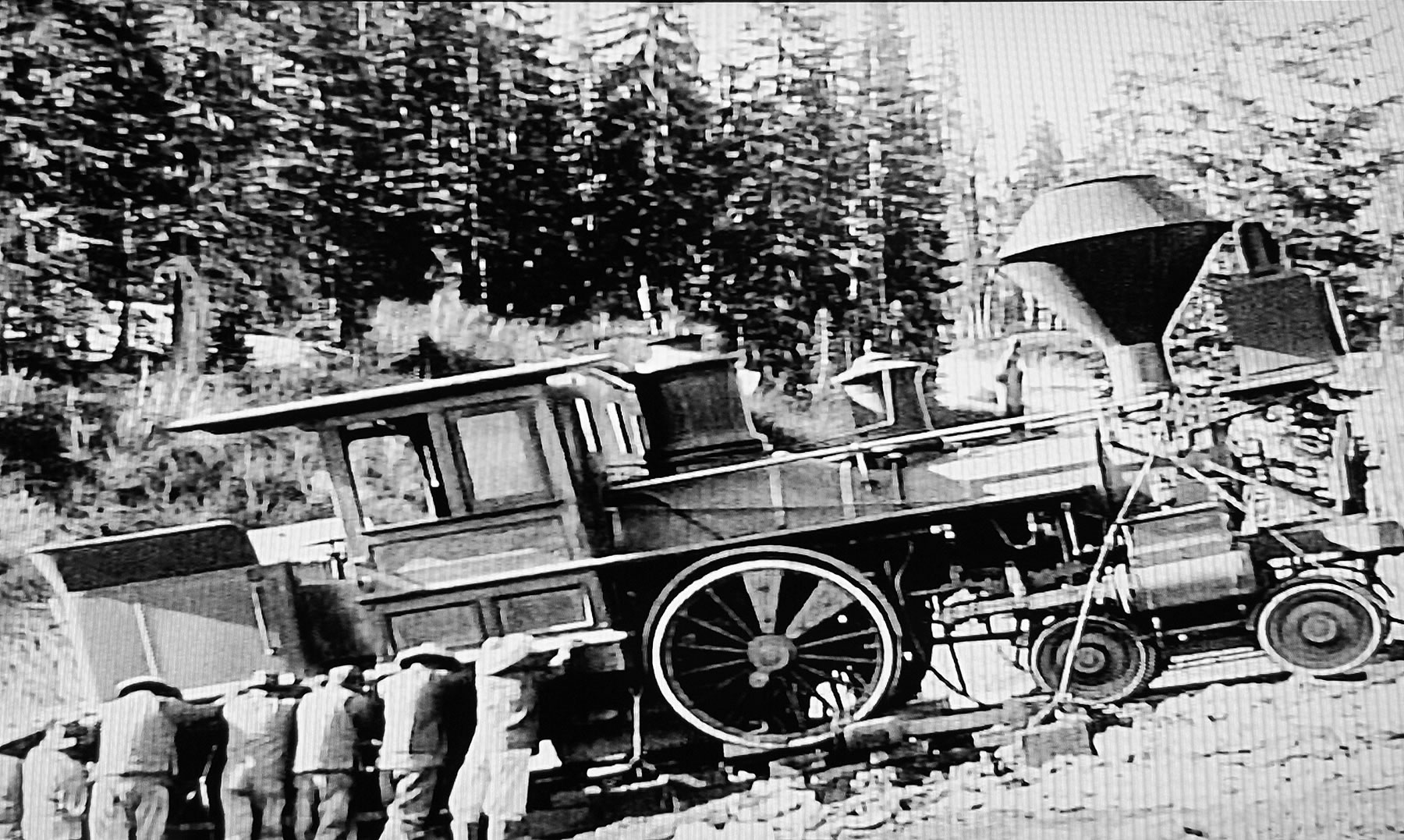
The story of the first locomotive over Donner Summit is amazing. It is a testament to both the intrepid ingenuity of the railroad builders and to their frustration.
The Central Pacific (CPRR) was making only inches of progress a day on the summit tunnels. Sierra granite is among the hardest rocks on the planet. Tunnel 6, the longest tunnel at 1659 feet, took two years to build. Meanwhile the CPRR was foregoing money they could be earning racing across Nevada laying track. Someone had the brilliant idea to start laying track into Nevada. Then, when the tunnels were finished and the tracks all connected, the CPRR would reap a windfall.
To lay track into Nevada meant that there had to be track in Nevada and the equipment to lay it. Over the Sierra summit they took eventually eighty miles of track, parts of railroad cars to be assembled in Truckee, and three at least partly disassembled locomotives. The first locomotive and rails went over the summit in July, 1867. More was hauled over in subsequent summer months. The Sacramento Daily Union said “The Pacific Railroad managers… are employing all the teams they can procure to haul… three thousand tons of iron across the summit…” By September there was one locomotive, the San Mateo, operating in Truckee. Here we have the only surviving photograph of that locomotive, Alfred A. Hart #223, “Truckee River.”

We mention “summer” in the preceding paragraph because of the rest of the story. Of course it was summer, the casual reader would say. The winter of 1867-68 had a snowfall of 40 feet. The packed snow was 18 feet deep. Storm followed storm. Over the snow from Cisco the CPRR hauled two more locomotives, another forty miles of track and more car parts. All of that was hauled over the summit on sledges pulled by oxen with snowshoes. At Donner Lake it was all transferred to wagons to be hauled “over miry roads to Truckee…” That was 28 miles.
To put that all in perspective, a mile of track in those days weighed 100 tons, each piece of track weighed 523 lbs. And was 28’ long. The first locomotive, the San Mateo weighed 30 tons full of fuel and water. Just how disassembled it was has been lost to history but one way or the other all thirty tons had to get over the summit.
 In 1925 John Ford made a movie called the Iron Horse. In that was a scene of Chinese railroad workers moving a locomotive over the summit. It’s a good picture, left, although not accurate.
In 1925 John Ford made a movie called the Iron Horse. In that was a scene of Chinese railroad workers moving a locomotive over the summit. It’s a good picture, left, although not accurate.
Then there is the issue of the route over the summit. The Dutch Flat Rd., built to help build the railroad was crowded with freight. It has sharp turns and steep grades. There was another route, the old Coldstream Pass route used by most emigrants crossing Donner Summit. It was also a stage route until the Dutch Flat route came along. It may have been easier to get the locomotives and track over the summit on that route rather than the Dutch Flat route. So, here, under the arrows in the top photo, you may be looking at part of that route. To solidify this idea that the Coldstream route was the route of the first locomotives over the summit, we can take a look at Arthur Foote who took his automobile over Donner Pass in the snow-covered spring of 1911. He and his companions stared down at where the road should have been. It was covered with snow on steep slopes. There was no way they could hold the car back from tumbling down the mountainside to Donner Lake. Instead they got their car up on the snowshed and traveled along that until the slope was less steep. If they could not control their car, how could a locomotive have been controlled?

